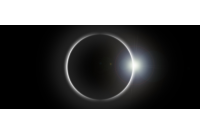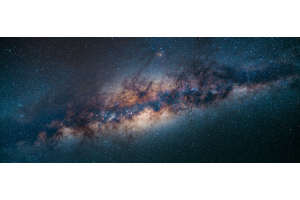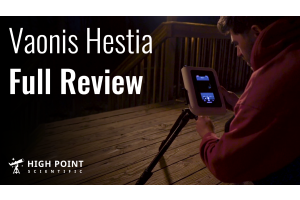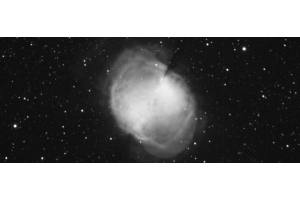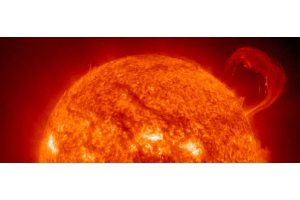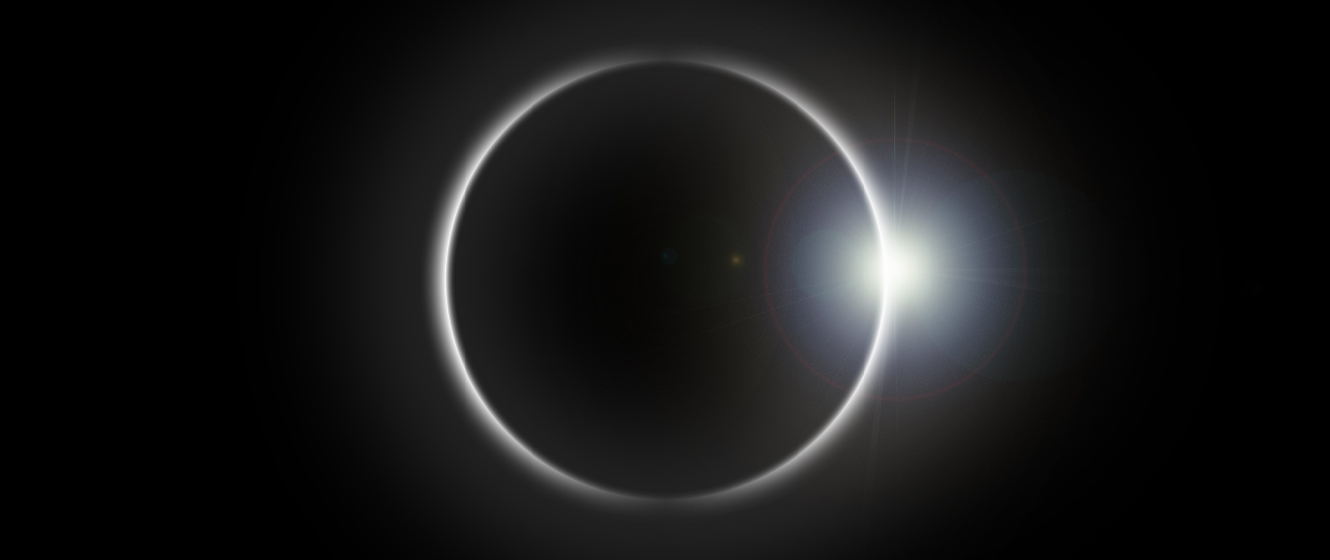
Please Note: There is a Newer Version of This Article Here
There’s nothing quite as awe-inspiring as a total eclipse. Both solar and lunar eclipses have captivated millions of people across the world for thousands of years, with many civilizations attributing the phenomena to gods or netherworld spirits.
While there’s nothing mystical causing the eclipses themselves, that’s not to say the phenomenon isn’t a magical experience. Whether it’s a solar eclipse where the sunlight fades over the course of several hours, the temperature drops and the landscape is plunged into momentary darkness, or a lunar eclipse where the Moon temporarily takes on a coppery hue, there’s an otherworldly aspect to eclipses that no other astronomical event can emulate.
What Are the Different Types of Solar Eclipse?
Broadly speaking, there are three main types of solar and lunar eclipses. A solar eclipse occurs at New Moon, when the Moon passes directly in front of the Sun. Although the Moon is about 400 times smaller than the Sun, it’s also 400 times closer to the Earth and, as a result, both the Sun and the Moon appear the same size in the sky.
If the Moon completely covers the Sun, then observers on Earth experience a total solar eclipse. For a few minutes, the sky turns dark, the stars and planets appear and the ghostly white solar corona - the outermost layer of the Sun’s atmosphere - can be seen.
If the Earth, Moon, and Sun aren’t perfectly aligned, we won’t have a total or annular eclipse at all. The Moon’s orbit is inclined slightly, and eclipses don’t happen every month, but on some occasions, we might see a partial eclipse. This happens when part of the Sun’s disc is obscured. The view will vary, depending upon your location on Earth, but when a significant portion of the Sun is covered, observers can detect a drop in light and the Sun appears to have a chunk cut out of it. A partial solar eclipse can also be seen during a total solar eclipse, both before and after totality, and by anyone not lucky enough to be within the path of the Moon’s shadow across the Earth.
What Are the Different Types of Lunar Eclipse?
The Earth, like all objects, casts a shadow, and a lunar eclipse occurs when the Moon passes through that shadow. Since the shadow is caused by the Sun, a lunar eclipse can only happen at Full Moon, when the Moon is on the opposite side of the Earth from the Sun.
As the Earth’s shadow is quite large, totality can sometimes last up to several hours, as the Moon slowly moves through it. It typically takes on a coppery hue; the Earth’s atmosphere refracts sunlight and, as a result, the shadow is not completely dark. On rare occasions, when the atmosphere is polluted (for example, from a volcanic eruption), less light is refracted and the shadow is so dark the Moon can almost disappear completely.
The Earth’s shadow is made up of two parts - the central, darkest area is called the umbra, while the outermost, much lighter area is called the penumbra. The Moon will pass through both areas during a total eclipse.
A partial eclipse occurs when the Sun, Earth, and Moon are not quite in alignment and the Moon isn’t completely engulfed in the umbra. If the Moon doesn’t touch the umbra at all, it might only pass through the penumbra. Given that the penumbra is not nearly as dark, the Moon’s light is only slightly dimmed during a penumbral eclipse, and it can often be difficult to notice any change at all.
Lastly, one of the big differences between a solar and a lunar eclipse is that you can view a lunar eclipse from anywhere the Moon is visible during the eclipse. For example, if the total eclipse occurs at midnight, eastern time, then the east coast will see it high in the sky at that time, while those on the west coast will see it rising in the southeast at 9 pm.
The Eclipses for 2022
Eclipses always come in pairs, with the second eclipse occurring about two weeks after the first. Since it takes almost a month for the Moon to orbit the Earth, you’ll never get two lunar eclipses, or two solar eclipses, paired together, but rather one of each.
For example, this year we have two pairs of eclipses, making four eclipses in total. In both pairs, the solar eclipse occurs first, with the lunar eclipse coming a few weeks later.
As we review each eclipse in turn, we’ll review where you can observe it and give you an idea of what you might expect. Where appropriate, there’s also a table showing timings for the eclipse in Universal Time (UT), Eastern Time (ET), Central Time (CT), Mountain Time (MT), Pacific Time (PT), Alaska Time (AT), and Hawaii-Aleutian Time (HAT).
If you’d like to know the details for your specific location, you can find out more by visiting www.timeanddate.com/eclipse.
April 30th, 2022 - Partial Solar Eclipse
Unfortunately, the first eclipse of the year is more than a little anti-climactic, to say the least. It’s partial, with a magnitude of 0.64, which means that nearly two-thirds of the Sun will be covered by the Moon.
But before you get too excited, it won’t be visible from anywhere except the southern half of South America, and if you want to see the Sun as anything more than 40% obscured, you’ll need to visit the southern tip of either Chile or Argentina.
For example, Buenos Aires will see a Sun that’s not quite a quarter eclipsed at sunset, while Santiago in Chile will witness a 40% eclipsed Sun just five degrees over the west-northwestern horizon.
Assuming you don’t want to venture further south to Antarctica, here are the top 5 locations to observe the eclipse:

| Town / City | Country | Duration | Local Time | Mag. | Altitude | Direction | |
|---|---|---|---|---|---|---|---|
| 1. | Ushuaia | Argentina | 1h 22m | 5:57 pm | 0.62 | 0.9° | WNW |
| 2. | Punta Arenas | Chile | 1h 36m | 5:59 pm | 0.62 | 2.9° | WNW |
| 3. | Rio Gallegos | Argentina | 1h 29m | 6:03 pm | 0.61 | 2.2° | WNW |
| 4. | Santiago | Chile | 1h 30m | 5:36 pm | 0.40 | 4.9° | WNW |
| 5. | Mendoza | Argentina | 1h 20m | 6:38 pm | 0.39 | 3.4° | WNW |
May 16th, 2022 - Total Lunar Eclipse
This year might be disappointing in terms of solar eclipses (especially with both being partial) but North America fares better when it comes to eclipses of the Moon. Both of the year’s lunar eclipses are total, with the east coast having the best seats in the house for the first.
This time the Moon will be among the faint stars of Libra, the Scales, but about 13 degrees to the northwest of Antares in Scorpius. This should enable you to compare the colors of the two; the eclipse has a magnitude of 1.41, and with the Moon being roughly midway between the edge and center of the umbra, it should appear reasonably coppery.
(Bear in mind that the actual color of the Moon is also dependent upon the amount of dust in the Earth’s atmosphere, which will vary from one eclipse to another).
The eclipse begins at moonrise for east coast observers and those living on the eastern half of the Central time zone (eg, Chicago, IL). Meanwhile, those in the western half of the Central time zone (eg, Dallas, TX) or in the Mountain Time zone (eg, Phoenix, AZ) are more likely to see the Moon rising just as the partial phase begins.
That means west coast observers (eg, Los Angeles) won’t see the Moon until shortly before the onset of totality - but at least they won’t need to stay up until the early hours to see the Moon in mid-eclipse.
From this point on, weather permitting, it’s pretty clear sailing, with every location able to enjoy the remainder of the eclipse with the Moon above the horizon.
| Event | UT | ET | CT | MT | PT | AT | HAT |
|---|---|---|---|---|---|---|---|
| Penumbral Phase Begins | 01:32 | 21:32 (15th) | 20:32 (15th) | 19:32 (15th) | 18:32 (15th) | 17:32 (15th) | 16:32 (15th) |
| Partial Phase Begins | 02:27 | 22:27 (15th) | 21:27 (15th) | 20:27 (15th) | 19:27 (15th) | 18:27 (15th) | 17:27 (15th) |
| Totality Begins | 03:29 | 23:29 (15th) | 22:29 (15th) | 21:29 (15th) | 20:29 (15th) | 19:29 (15th) | 18:29 (15th) |
| Mid-Eclipse | 04:11 | 00:11 | 23:11 (15th) | 22:11 (15th) | 21:11 (15th) | 20:11 (15th) | 19:11 (15th) |
October 25th, 2022 - Partial Solar Eclipse
If you were disappointed with April’s partial solar eclipse, you might like October’s a little more. For starters, it’s visible throughout the majority of Europe and even stretches into northeastern Africa, India, and central and western Asia, so there’s no need to potentially travel to the far-distant corners of the southern hemisphere to see it.
This particular eclipse has a magnitude of 0.86, and if you happen to be in its path, you’ll definitely notice a drop in ambient light as the Sun is reduced to little more than a thin crescent.
To see the maximum magnitude for yourself, you’ll need to be in central Asia and, ideally, at one of the top five locations below. As in April, each location will witness mid-eclipse at sunset (although the Sun itself will be a little higher above the horizon this time).
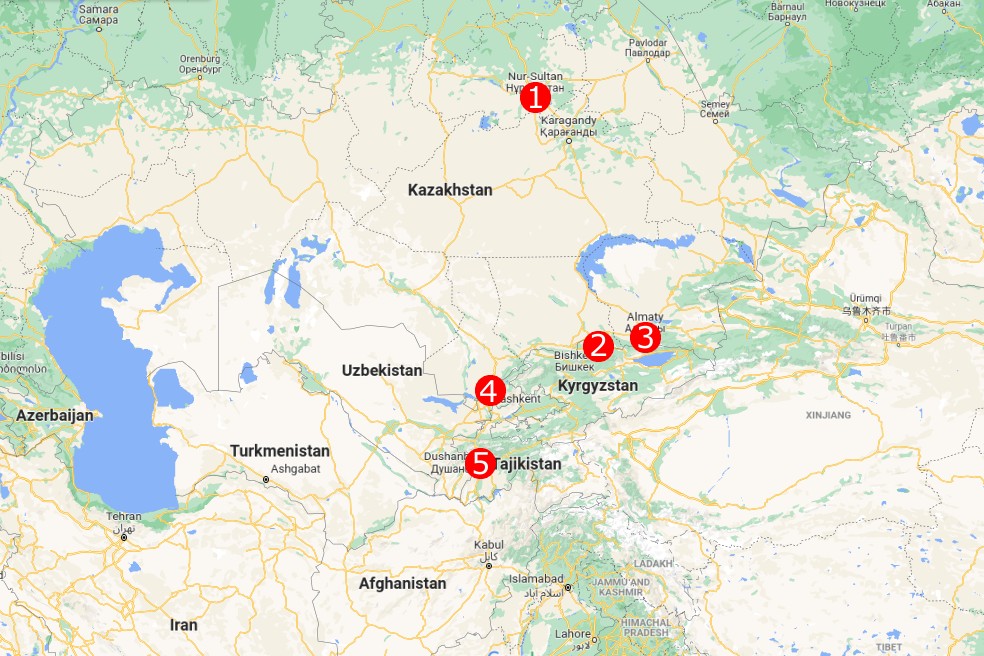
| Town / City | Country | Duration | Local Time | Mag. | Altitude | Direction | |
|---|---|---|---|---|---|---|---|
| 1. | Nur-Sultan | Kzakhstan | 1h 55m | 5:17 pm | 0.83 | 6.1° | WSW |
| 2. | Bishkek | Kyrgyzstan | 1h 39m | 5:34 pm | 0.76 | 4.8° | WSW |
| 3. | Almaty | Kzakhstan | 1h 27m | 4:26 pm | 0.76 | 3.0° | WSW |
| 4. | Tashkent | Uzbekistan | 2h 5m | 4:34 pm | 0.75 | 9.1° | WSW |
| 5. | Dushanbe | Tajikistan | 2h 6m | 4:39 pm | 0.72 | 9.7° | WSW |
November 8th, 2022 - Total Lunar Eclipse
Whereas May’s eclipse arguably favors east coast observers, those on the west coast will get the better deal for the second total lunar eclipse of the year. East coast observers will be able to see the penumbral and partial phases but will find the Moon sinking in the west by the time totality begins.
Unfortunately, totality also begins shortly after the sky begins to brighten, and by the time mid-eclipse occurs, you might find the Moon is too low and the sky is too bright to truly enjoy the spectacle.
It’s a little better for observers in the Central time zone, with totality beginning some two to three hours before sunrise. As an added bonus, the sky won’t start to brighten until after the middle of the eclipse.
If you’re in the Mountain time zone, you’ll find totality ending while the sky is still dark, but astronomical dawn begins shortly before the end of the partial phase.
In terms of the mainland, observers on the west coast will have it best, with the partial phase ending just as the pre-dawn twilight starts to encroach upon the sky. Better yet, those in Alaska and Hawaii can see the entire eclipse from start to finish.
If you’re at a location where totality is visible, be sure to check out the Moon’s celestial surroundings at that time. The Moon itself will be in Aries, but in neighboring Taurus, we have the bright star Aldebaran and, better yet, the planet Mars. It’ll be only a month away from opposition, and at magnitude -1.4, will be almost equal to Sirius in brightness at that time.
Both Aldebaran and Mars should provide a good color comparison with the eclipsed Moon. Which of the two appears to be a closer match?

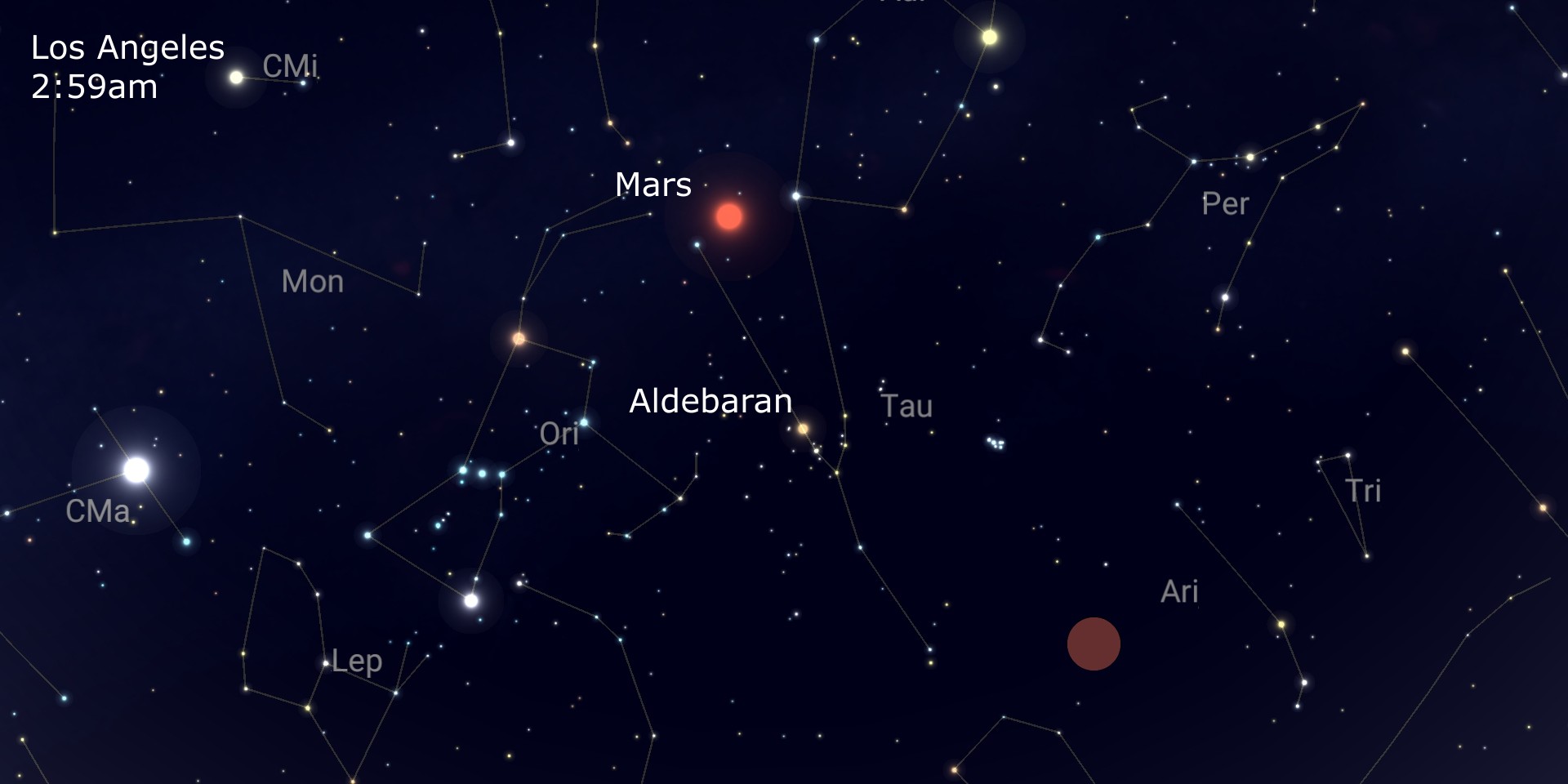
| Event | UT | ET | CT | MT | PT | AT | HAT |
|---|---|---|---|---|---|---|---|
| Penumbral Phase Begins | 08:02 | 03:02 | 02:02 | 01:02 | 00:02 | 23:02 (7th) | 22:02 (7th) |
| Partial Phase Begins | 09:09 | 04:09 | 03:09 | 02:09 | 01:09 | 00:09 | 23:09 (7th) |
| Totality Begins | 10:16 | 05:16 | 04:16 | 03:16 | 02:16 | 01:16 | 00:16 |
| Mid-Eclipse | 10:59 | 05:59 | 04:59 | 03:59 | 02:59 | 01:59 | 00:59 |
| Totality Ends | 11:41 | 06:41 | 05:41 | 04:41 | 03:41 | 02:41 | 01:41 |
| Partial Phase Ends | 12:49 | 07:49 | 06:49 | 05:49 | 04:49 | 03:49 | 02:49 |
| Penumbral Phase Ends | 13:56 | 08:56 | 07:56 | 06:56 | 05:56 | 04:56 | 03:56 |
This Article was Last Updated on 8/24/2023

Questions? Learn More!
Interested in learning more about eclipses? Check out our articles in the Astronomy Hub for all your astrophotography and astronomy needs!

